Nixeus NX-VUE27 27" Monitor: High Resolution for the Masses
by Chris Heinonen on September 20, 2012 6:10 PM ESTColor Quality
I didn’t have a driver CD or anything else to use for a default ICC profile for the Nixeus, so the initial measurements were done at 200 nits in standard mode, as it was the closest to the D65 white point of the sRGB standard.
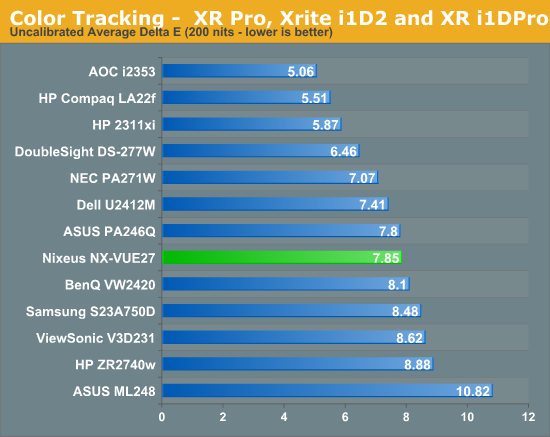
Straight out of the box the results are about par for a 27” display. With an average dE across the Gretag Macbeth chart of 7.85, this falls in as worse than the NEC and DoubleSight models I saw, but better than the HP that has been my favorite 27” to this point for its balance of price and performance.
The main issue with the uncalibrated performance is the grayscale numbers. Most of us have white backgrounds on webpages, Word, Excel, email, and all our other programs, so an error here is more visible that a shade of blue might be. This isn’t any worse than most other displays I have reviewed, but I wish it were better.

Once calibrated, the numbers really fall into line with everyone else. The average dE is 1.78, which is almost identical to the HP ZR2740w that scored 1.76. The grayscale error comes down to be between 1.0 and 1.5 across the whole scale, so you really won’t be able to notice a color tint at all. The errors all occur in those shades of blue that are always troublesome, but the rest of the numbers really fall into line here. This is impressive considering this display costs $300 less than its competitors.
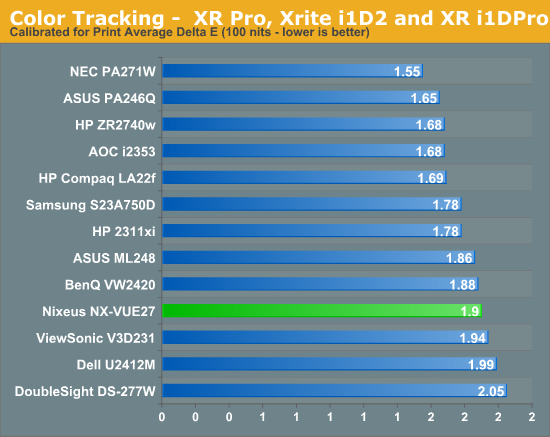
With print work the numbers aren’t quite as good. Set for 100 nits, we get a dE of 1.90 that begins to lag behind the HP, and really lags behind the far more expensive NEC PA271W. Nothing here is horrible, but it does fall a little behind the competition here. Most likely it won’t be noticeable in real world use, but for professionals that often want a dE of 1.0 or less, having a dE of closer to 2 might not cut it.
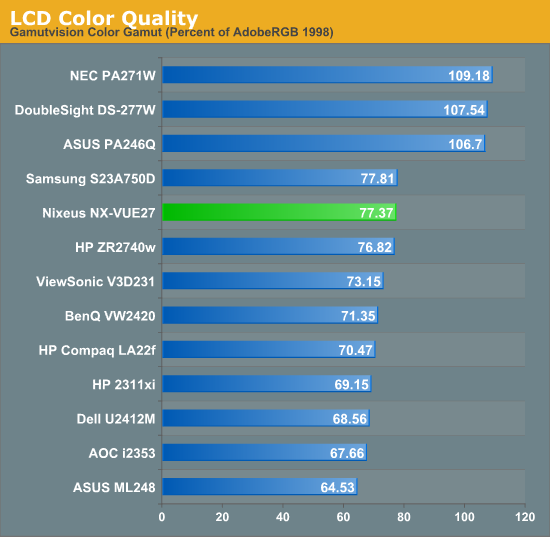
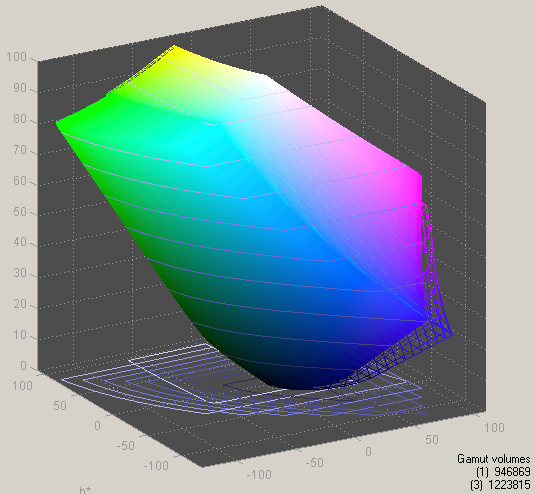
The coverage of the Nixeus panel is really no surprise at all. Since all 27" displays seem to be using a panel from LG with either LED or CCFL backlighting, it's the backlighting that determines the color gamut. Here we are incredibly close to the same coverage as the HP, both of which are covering virtually the entire sRGB gamut. As before, if you want a larger gamut, you'll need to get a CCFL or RGB-LED backlight; either one will push the cost up significantly right now, as well as the power consumption (and in the case of CCFL, the size).



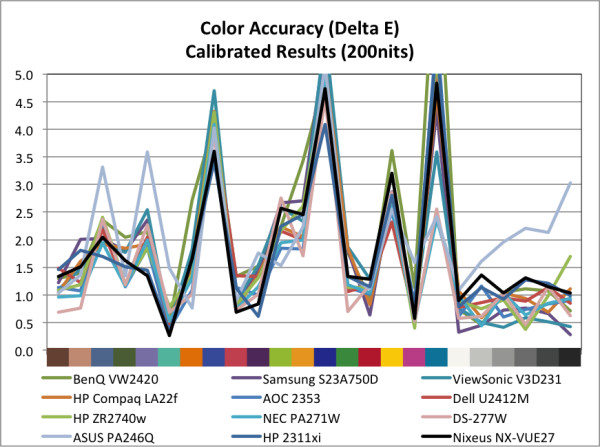
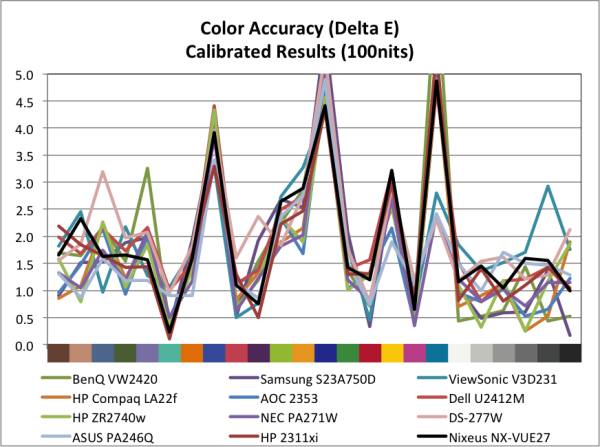








66 Comments
View All Comments
sheh - Thursday, September 20, 2012 - link
Too bad they kept the size and reduced the resolution rather than vice versa. :)Confusador - Friday, September 21, 2012 - link
Amen! I really want this resolution, but can't stand anything bigger than 23"falko2904 - Friday, September 21, 2012 - link
But that Dell is significantly lower resolution. It is only 1920x1080 (actually fine by me for what I would want). The class of monitors being talked about have 2560x1440 resolution.LIke I said, for my purpose, I actually like that Dell.
ikoss - Friday, September 21, 2012 - link
Dude.. that's 1080p crap, not to mention not likely to be an IPS!DanNeely - Sunday, September 23, 2012 - link
It's listed as IPS on the spec page; might only be eIPS though.Sabresiberian - Friday, September 21, 2012 - link
1920x1080 @ 27" might be fine for a TV across the living room, but it's crap for a monitor.RaistlinZ - Thursday, September 20, 2012 - link
Poor contrast, poor color gamut, high input lag, high power draw, mediocre build quality.You get what you pay for.
cheinonen - Friday, September 21, 2012 - link
I'm just going to suggest you didn't fully read the article or didn't look at similar displays in the results tables. The contrast was poor in comparison to the HP 27" display, but was close to the results from the NEC and DoubleSight panels. The color gamut is sRGB, exactly what it was specified for, and exactly what you get. The power draw was lower than all the other tested 27" displays, so that was good, and I commented plenty on the build quality.With input lag, other than the HP ZR2740w, which has no scaler, the input lag on all the other 27" models is almost identical (and the new review has the same issue). Whatever scaler is being used isn't incredibly fast, and combined with the response time of the display, the absolute minimum you are going to get is 1 frame. If you run at 1440p, you might get exactly 1 frame, but as I said, I have no way of knowing this. So in comparison to 27" displays, the lag, gamut, contrast, and power draw are either close to the same or better in most cases, with the build quality being the main issue in comparison.
sheh - Thursday, September 20, 2012 - link
...in case manufacturers scour the web for public opinion. :)Still waiting for hi-res in DPI rather than absolute number of pixels. And enough with 16:9. OLED aside, wanted: 3840x2400 in 24". If they don't start upping the DPI in desktop, soon enough cellphones will become higher-res (in pixels) than desktop monitors.
magreen - Thursday, September 20, 2012 - link
This.It's long past time for graphics drivers and operating systems to treat displays as a resolution independent output device, the way printers are. When you print a document to a printer that can print 600 dpi, it looks just like that same document printed on a 300 dpi printer except a bit sharper.
I'm so tired of having to blow up pdfs and word documents to much larger than their actual size because otherwise I can't read the smaller text (even if I put my face close to the monitor).